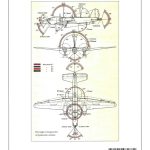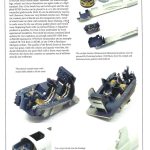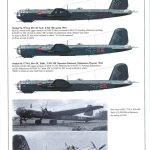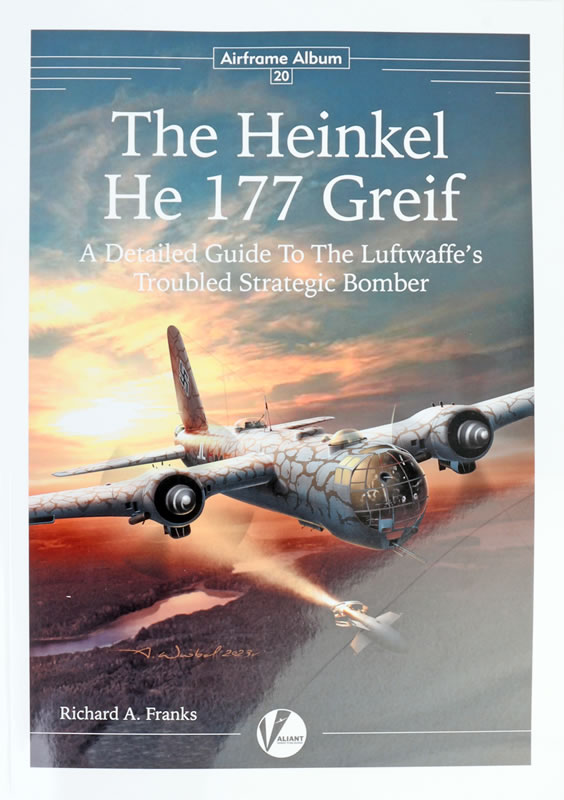
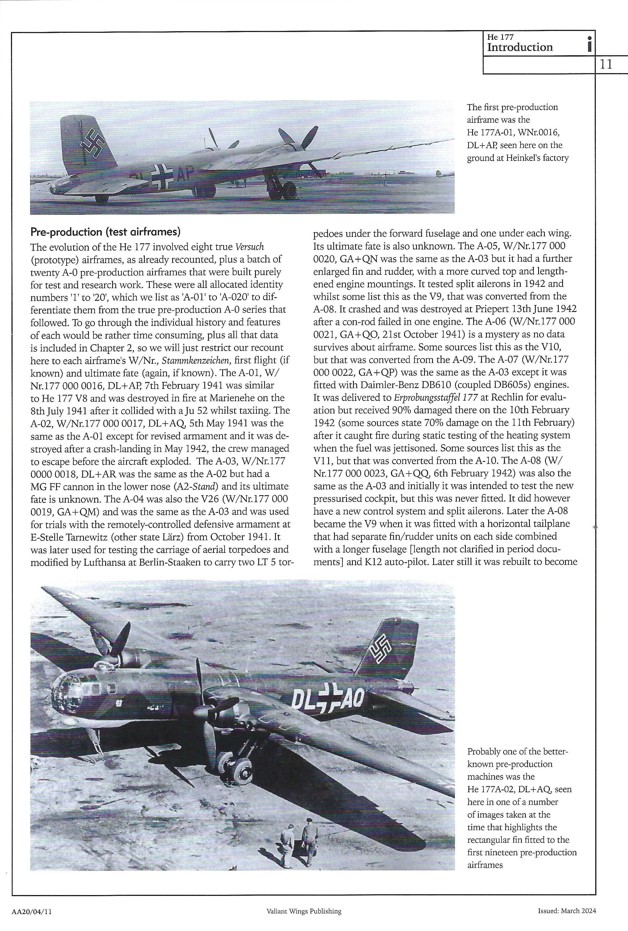
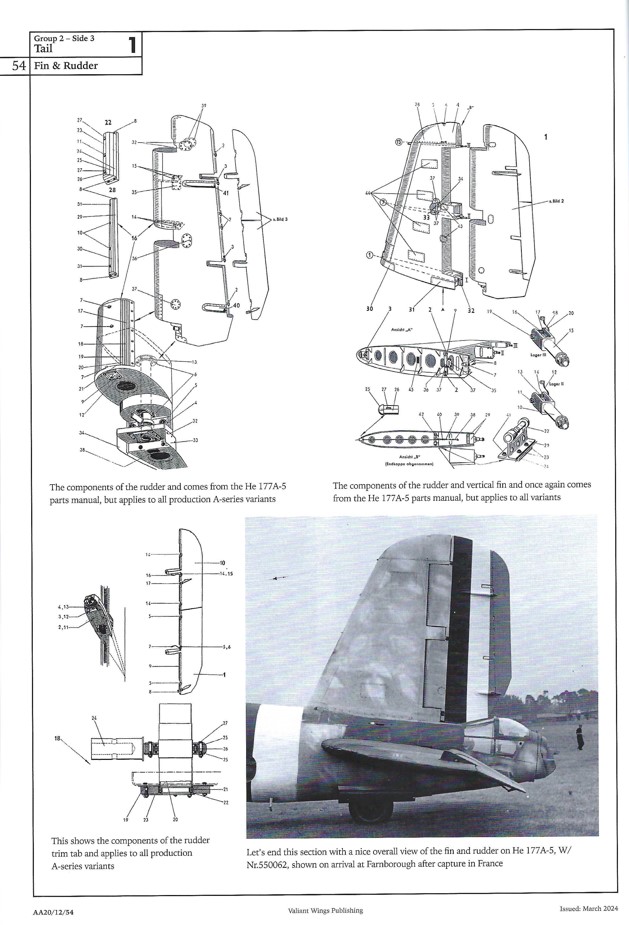
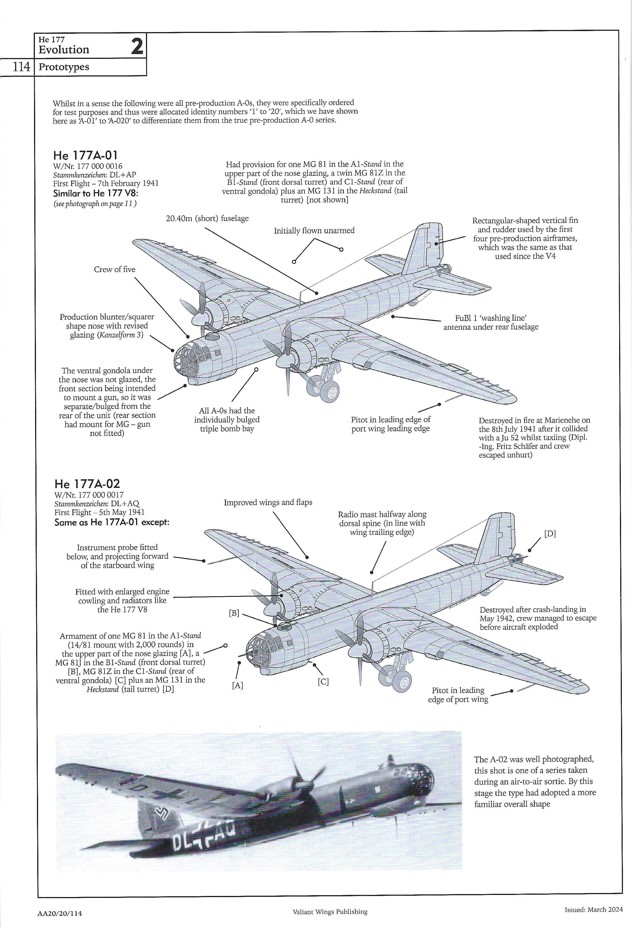
The Heinkel He-177 Greif,
Airframe Album 20
First Impression
ModelFan Nederlandse versie
Nederlandse versie
Auteur: Richard A. Franks
Illustrations: Richard J. Caruana, Wojciech Sankowski, and Arkadiusz Wrobel
Publisher: Valiant Wings Publishing
ISBN: 978-1-912932-38-2
E-Book ISBN 1912932385
Published: 2024
Pages 194 , soft cover, German/English
Price: GBP 25,95. Euro. 32,95
The Heinkel
He 177 was the only long-range bomber that the German Luftwaffe had in service in
significant numbers during World War II.
The aircraft was supposed to take over the tasks of the Heinkel He 111, but it was scornfully said, because of the incessant series of problems in development, that it killed more Germans than British or Americans.
The specification for the aircraft not only provided that it had to be able to carry a heavy bomb load over a long distance at a speed of 536 km/h, but that it could also make dives. Heinkel was only able to achieve this by reducing air resistance. That's why it decided to couple the four Daimler-Benz engines two-by-two, as they had previously used successfully on the Heinkel He 119. In addition, they wanted to be able to operate the turrets remotely.
Daimler-Benz had major problems with the construction of the engines and until 1943 the aircraft caught fire so often that it was nicknamed the flying lighter .
Despite
this troubled start, the He 177 proved itself to be a powerful and fast
long-range bomber and maritime reconnaissance aircraft beloved by the crews.
Successes were regularly achieved over Russia and England ("Operation
Steinbock"). However, in 1944 the production of strategic bombers was
discontinued in favour of single-engine fighters that urgently were needed to
stop the Allied bombers. Of the more than 1000 He 177s built, the last dozen
were built without engines and placed in reserve with a view to completing and
using them in later times. Units flying the He 177: Stab, I., II., III. and
IV./KG 1, I./KG 4, I., II. and IV./KG 40, I./KG 50, I., II. and IV./KG 100
Richard A. Franks kicks off with a twenty-six-page Preface / Introduction that
addresses the development and service of the Heinkel He 177 Greif. This
includes the French, the UK, and USA evaluation aircraft. along with all the
Heinkel He 274 and Heinkel 277 projects. Page 11 shows off two of the
pre-production airframes or test airframes. The first of twenty of these is the
Heinkel He 177A-01 [W/Nr. 0016, DL+AP] and is shown at Heinkel’s factory at the
top of the page. The He 177A-01 had a short life with its first flight on
February 7, 1941, before being destroyed in a fire on July 8, 1941. The bottom
of the page features the second pre-production airframe, He 177A-02 [W/Nr.
0017, DL+AQ]. First flight was achieved on May 5, 1941, but she was destroyed
in May 1942 upon crash landing and then exploding.
Chapter One, “Technical Description”, covers every part of the airframe by section. Page 54 is a good example with a black and white photograph and drawings from German technical / parts manuals of the He 177A-5 fin and rudder. Note that the photograph is of the captured He 177A-5 at Farnborough. Wojciech Sankowski is up next with Chapter 2. “Evolution”. His isometric drawings is one of the highlights for me in this series. The drawings highlight what changed in each variant, are well labelled, and often include actual photographs showing off the detail. Page 114 shows off the He 177A-01 and He 177A-02, along with another period photograph of the He 177A-02 on a flight. Every variant is covered in this chapter from the He 177 V1 in its initial form to the proposed He 277B.
.
Chapter Three digs into the Heinkel He 177’s Camouflage and Markings with
photographs and color illustrated side profiles by Richard J. Caruana. Page 164
has three of Richard J. Caruana colour side profile illustrations of the He
177A from 1944. The two period photographs feature the Heinkel He 177A-3,
“Susi”, of 2./KG 100 during the Spring of 1944. Note the red spinner and the
second half of the code, 6N+SK, in red, outlined in white. If you look closely,
the first part of the code, ‘6N’, is in white before the cross, only it is
quite small compared to the ‘SK’.
Libor Jekl does a build review of the Revell 1/72nd (#04616) Heinkel He 177A-5 & Fritz-X kit. All of the photographs in Chapter Four,” Model”, Selection, are in colour. Page 183 shows off the construction steps and detail in this build, notably the detailed cockpit and tail gunner position. This build review also includes sections on construction, colours and markings, final details, a conclusion, and a table of the paints used. There are not a lot of kits available of the He 177, with most offerings in 1/72nd scale. This volume ends with a recap of available kits, supplemented with three Appendices listing available kits, accessories, decals, and publications. Pit-Road’s multiple releases of the 1/700th scale He-177 was somehow missed, with the latest release in 2022.
Conclusion
Richard A. Franks delivers yet another must have historical and model reference
that organizes all of the early variants sequentially. The 192 pages is packed
with details and as the subtitle claims, this is a ‘A Detailed Guide To The
Luftwaffe’s Troubled Strategic Bomber’
98 colour pictures and 861 black and white photographs (including manual
photographs and drawings). Richard J. Caruana provides 32 colour profiles plus
a top colour view by of the Heinkel He 177, including badge views. Wojciech
Sankowski contributes 114 3D isometric views of all the prototype and
production airframes in Chapter 2 on ‘Evolution. There is one page of 1/72 line
drawings by Richard J. Caruana that provides stencil marking details. For me a book with an incredible amount of
information about the Greif, quite special.
I was surprised to learn how the German high command insisted that this
four-engine bomber must be able to dive bomb which played havoc with the
design. The detailed drawings and period photographs provide amazing detail
that can be used to detail up any model kit. The Richard J. Caruana colour
illustrations in conjunction with the Camouflage and Markings chapter make sure
you get the correct colours on your kit. There are more than enough
contemporary photographs to inspire your next build. Wojciech Sankowski’s
isometric illustrations help organize the myriad of variations that can be
considered and is a nice evolutionary presentation that is quite valuable. If
you have any interest in the history and modelling the Heinkel He 177, put this
book on your list to acquire, it is a must-have!
Highly recommended!
